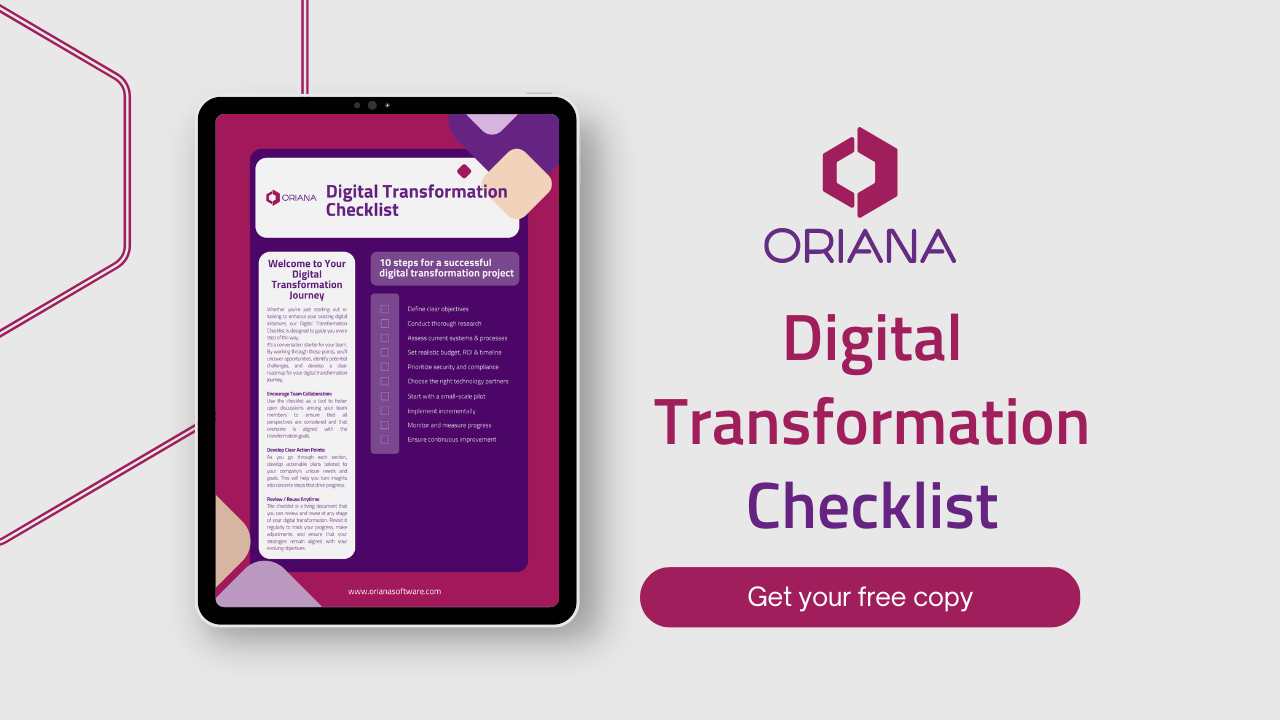Welcome to the first installment of our blog series, designed to help you navigate the exciting yet complex terrain of sustainable digital transformation. This month, we’ll focus on the foundational steps of defining clear objectives, conducting thorough research, and assessing current systems and processes. Let’s dive in and set the stage for a successful digital transformation journey!
1. Defining Clear Objectives for Sustainable Digital Transformation
Setting clear, realistic and actionable objectives is the cornerstone of any successful digital transformation. Here’s why and how you should do it:
Why It’s Important:
- Alignment with Business Goals: Clear objectives ensure that your digital transformation efforts are aligned with the overall business strategy.
- Measurable Success: Your goals work for you, as they provide benchmarks against which you can measure progress and success.
- Team Motivation: Well-defined goals can motivate your team by providing a clear sense of purpose and direction. Nevertheless, a company’s willingness and efforts to modernize can also be attractive qualities for both newcomers and veteran colleagues.
Tips for Setting Clear Objectives:
- SMART Goals: Ensure your objectives are Specific, Measurable, Achievable, Relevant, and Time-bound. For example, instead of “improve customer service,” aim for “reduce customer service response time by 20% within six months.”
- Involve Stakeholders: Engage key stakeholders from different departments to gain diverse perspectives and buy-in.
- Align with Pain Points: Base your objectives on identified pain points and areas ripe for improvement. Pay attention to gradual and continuous information sharing, so that the team can prepare for the changes already in the early stages of the project.
Methodology:
- Workshops and Brainstorming Sessions: Organize workshops with your team to discuss and refine your objectives. Miro board is one of the best free online whiteboard tools that can be a perfect display for drawing and organizing your ideas.
- SWOT Analysis: Conduct a SWOT analysis (Strengths, Weaknesses, Opportunities, Threats) to ensure your objectives are grounded in reality and are aligned with the overall business strategy.
2. The role of thorough research in achieving sustainable digital transformation
A thorough understanding of the digital landscape is crucial before embarking on your transformation journey. Here’s how to ensure your research is comprehensive:
Why It’s Important:
- Data-driven decisions: Comprehensive research provides sound data and up-to-date information on technologies and strategies. Based on these data and trends, better decisions can be made.
- Competitive Edge: Understanding your competitors’ strategies can provide insights and reveal gaps and possibilities in your own approach.
- Risk Mitigation: Identifying potential pitfalls early can help you avoid costly mistakes.
Tips for Conducting Research:
- Industry Trends: Keep abreast of the latest trends and technologies in your industry. Subscribe to industry journals, attend webinars, and join professional networks, forums.
- Competitor Analysis: Study your competitors’ relation to digitalization to learn from their successes and mistakes.
- Customer Insights: If the business profile allows, gather insights directly from your customers through surveys, interviews, and/or feedback forms.
Methodology:
- PEST Analysis: Perform a PEST analysis (Political, Economic, Social, Technological) to understand the macro-environmental factors that could impact your transformation.
- Tech Scouting: Regularly scout for new technologies and solutions that could benefit your business. Use platforms like Gartner, Forrester, or G2 Crowd for reliable reviews and comparisons.
3. Assess Current Systems and Processes
Before setting up your detailed project plan, first you need to understand what is available to you, and what situation you are starting from. Here’s how to assess your current systems to ensure sustainable digital transformation:
Why It’s Important:
- Baseline Understanding: It provides a clear picture of your starting point, which is crucial for measuring progress.
- Identify Inefficiencies: Highlighting inefficiencies and defining bottlenecks allow you to prioritize areas for improvement.
- Resource Allocation: Understanding your current state helps in better planning and allocation of resources.
Tips for Assessment:
- Create a Process Map: Document all your current workflows and processes. This visual representation can help identify redundancies and inefficiencies. The draw.io might be a suitable online tool for this task.
- Infrastructure Audit: Evaluate your existing IT infrastructure to determine its capacity to support new technologies.
- Employee Feedback: Engage with your employees to get their perspectives on what works and what doesn’t. With this, you start to establish commitment at the earliest stage.
Methodology:
- Gap Analysis: Perform a gap analysis to compare your current state with where you want to be. This will highlight the specific areas needing change.
- Root Cause Analysis: Use tools like the Five Whys or Fishbone Diagram to delve deep into the causes of inefficiencies.
Stay tuned for our July blog article, where, in addition to defining security and compliance aspects, we will also talk about the importance of starting with a pilot project, how to ensure continuous improvement, and how to choose the right technology partner in order to build a sustainable digital transformation project.
Contact us for more information or for a personalized advice! Let’s make this summer the season of transformation!




